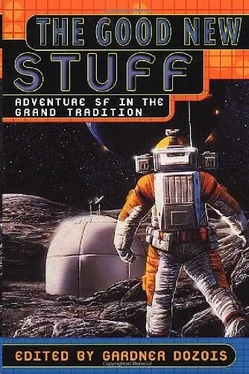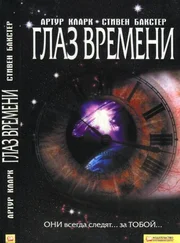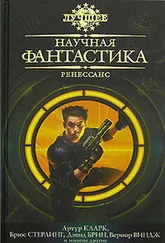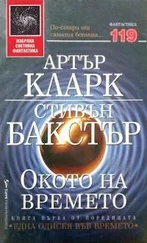Стивен Бакстер - The Good New Stuff
Здесь есть возможность читать онлайн «Стивен Бакстер - The Good New Stuff» весь текст электронной книги совершенно бесплатно (целиком полную версию без сокращений). В некоторых случаях можно слушать аудио, скачать через торрент в формате fb2 и присутствует краткое содержание. Год выпуска: 2002, ISBN: 2002, Издательство: St. Martin's Griffin, Жанр: Фантастика и фэнтези, на английском языке. Описание произведения, (предисловие) а так же отзывы посетителей доступны на портале библиотеки ЛибКат.
- Название:The Good New Stuff
- Автор:
- Издательство:St. Martin's Griffin
- Жанр:
- Год:2002
- ISBN:0-312-26456-9
- Рейтинг книги:3 / 5. Голосов: 1
-
Избранное:Добавить в избранное
- Отзывы:
-
Ваша оценка:
- 60
- 1
- 2
- 3
- 4
- 5
The Good New Stuff: краткое содержание, описание и аннотация
Предлагаем к чтению аннотацию, описание, краткое содержание или предисловие (зависит от того, что написал сам автор книги «The Good New Stuff»). Если вы не нашли необходимую информацию о книге — напишите в комментариях, мы постараемся отыскать её.
The Good New Stuff — читать онлайн бесплатно полную книгу (весь текст) целиком
Ниже представлен текст книги, разбитый по страницам. Система сохранения места последней прочитанной страницы, позволяет с удобством читать онлайн бесплатно книгу «The Good New Stuff», без необходимости каждый раз заново искать на чём Вы остановились. Поставьте закладку, и сможете в любой момент перейти на страницу, на которой закончили чтение.
Интервал:
Закладка:
And, he thought, little good that brings me.
This was a star not easily naked-eye visible from the Home world, but the astronomers had long ago pinpointed it and its unseen planets. He was forty-seven light-years from home (his mind accepted without understanding the abyss of time passed) on a course plunging him into the gravity well of an all-too-welcoming star at some thirty-two miles per second. The computer assured him that on his present course this yellow sun, though a child by comparison with the Great Twin, was powerful enough to grasp him and draw him into its atmosphere of flame.
But he had not come so far across time and space to die sitting still, eaten alive by a pigmy star.
He needed to buy time for thought. Deceleration alone was not enough for useful flight.
There was a blue-green planet, the almanac told him, which might possibly offer livable conditions. The hope was small in a universe where minute changes of temperature, orbit or atmosphere composition could put a world for ever beyond life, but the Deity which had guided him so finely and so far could surely crown His miracle with a greater one.
If he could achieve steering…
He was tempted to jimmy the cover off the Drive Panel and expose the linkages but common sense suggested that he would merely cause greater damage. He was coldly aware of ignorance and lack of mechanical talent; the maze of linkages would be to him just that— a maze, impenetrable.
Because he was untrained he failed for several hours to hit on the possibility that the computer, once programmed to act rather than simply inform the pilot, might operate directly on the machine structures, bypassing linkages and levers. The entertainment media had imprinted him and all but those who actually operated space craft with a mental picture of pilots working by manual control, whereas it might be necessary only to tell the computer what he wanted.
That turned out to be anything but simple. As a gunnery officer he considered himself computer competent but he slept several times before he penetrated the symbols, information needs and connections of the highly specialized machine. Like most junior officers he had been rushed through an inadequate basic training and sent into space innocent of the peacetime auxiliary courses, with no expertise in other than visual navigation.
But, finally, the steering jets turned the pod end for end, the main jet roared triumphantly and the little craft slowed at the limit of deceleration his consciousness could bear. Held firmly in his straps with an arm weighing like stonewood, he questioned the computer about trajectories and escape velocities and how it might take him to the third planet of the yellow star.
It balanced distance against fuel and calculated a slingshot rounding of the central sun which would bring him economically to his goal, his destiny. There would be, Fernix knew, only a single chance and choice.
A Miner's Mate is, more correctly, an Asteroid Mining Navigational and Mass Detection Buoy. One of them sat sedately above a group of fairly large iridium-bearing "rocks" in the Belt, providing guidance for the occasional incoming or outgoing scow and warning against rogue intruders— meteorites or small asteroids in eccentric orbits. It carried a considerable armament, including two fusion bombs capable of shattering a ten-million-ton mass, but large wanderers were rare and collision orbits rarer still. Its warnings commonly did little more than send miners scurrying to the sheltered side of their rock until the danger passed.
Since space debris travels at speeds of miles per second, the sensitivity radius of the Mate's radar and vision systems was necessarily large. It registered the incoming pod at a million kilometers. Being fully automatic, it had no intelligence to find anything peculiar in the fact that it saw the thing before the mass detectors noted its presence. It simply radioed a routine alert to the mines and thereafter conscientiously observed.
The Shift Safety Monitor at the communication shack saw the tiny, brilliant point of light on his screen and wondered briefly what sort of craft was blasting inwards from the outer orbits. Scientific and exploratory probes were continuously listed and there were none due in this area of the System. Somebody racing home in emergency? Automatically he looked for the mass reading and there was none. What could the bloody Mate be doing? The mass of metal that put out such a blast must be easily measurable.
The Monitor's name was John Takamatta; he was a Murri from Western Queensland. This particular group of mines was a Murri venture and he was a trained miner and emergency pilot, now taking his turn on the dreary safety shift. Like most of his people he rarely acted without careful observation first; he waited for the Mate to declare or solve its problem.
The Mate's problem was that it could not recognize timber or any substance that let most of its beam through and diffused it thoroughly in passage. There was metal present but not enough to contain the tubes for such a drive blast and there was ceramic, probably enough for linings, but the amorphous mass surrounding these was matter for conjecture and conjecture was outside its capacity.
However, it tried, feeding back to the Mines computer a flicker of figures which mimicked a state of desperate uncertainty and gave the impression of a large, fuzzy thing of indefinite outline secreting within it some small metal components and ceramic duct lining.
Takamatta tried to enlarge the screen image but the size of the light did not change. It was either very small or far away or both.
The Mate's hesitant figures hovered around something under a ton but no mass so slight could contain such brilliance. Yet it could only be a ship and there were no ships of that nursery size. He rang the dormitory for the off-duty, sleeping Computer Technician. Albert Tjilkamati would curse him for it but they were related, men of the same Dreaming, and the curse would be routinely friendly.
Albert came, cursed, watched, sent a few test orders to the Mate and decided that it was not malfunctioning, yet the oscillating, tentative figures suggested a human operator floundering with an observation beyond his competence. Once the analogy had occurred to him, he saw the force of it.
"Something it can't recognize, John. Its beam is being diffused and spread from inner surfaces— like light shining into a box of fog. The receptors don't understand. John, man, it's picked up something new in space! We'll be in the newscasts!"
He called Search and Rescue's advance base in the Belt.
The Search and Rescue Watch Officer knew Albert Tjilkamati; if he said "strange" and "unusual," then strange and unusual the thing was.
"OK, Albert; I'll send a probe. Get back to you later."
He eased a torpedo probe out of its hangar, instructed its computers and sent it to intercept the flight path of the stranger. The probe was mainly a block of observational and analytical equipment in a narrow, twelve-meter tube, most of which was fuel tank; it leapt across the sky at an acceleration that would have broken every bone in a human body.
Starting from a point five million kilometers retrograde from the orbit of the Murri Mines, it used the Miner's Mate broadcast to form a base for triangulation and discovered at once that the incoming craft was decelerating at a g-number so high that the probe would have to recalculate its navigating instructions in order to draw alongside. It would, in fact, have to slow down and let the thing catch up with it.
The Watch Officer asked his prime computer for enhancement of the fuzzy mass/size estimates of the Mate, but the machine could not decide what the craft was made of or precisely where its edges were.
Читать дальшеИнтервал:
Закладка:
Похожие книги на «The Good New Stuff»
Представляем Вашему вниманию похожие книги на «The Good New Stuff» списком для выбора. Мы отобрали схожую по названию и смыслу литературу в надежде предоставить читателям больше вариантов отыскать новые, интересные, ещё непрочитанные произведения.
Обсуждение, отзывы о книге «The Good New Stuff» и просто собственные мнения читателей. Оставьте ваши комментарии, напишите, что Вы думаете о произведении, его смысле или главных героях. Укажите что конкретно понравилось, а что нет, и почему Вы так считаете.











